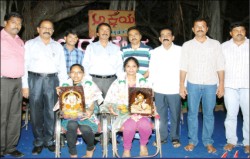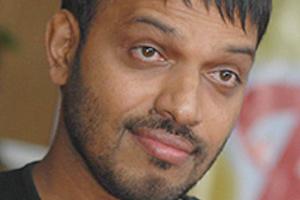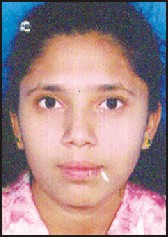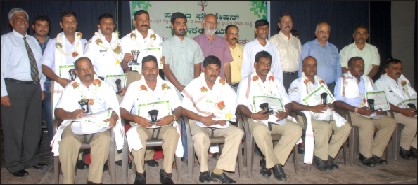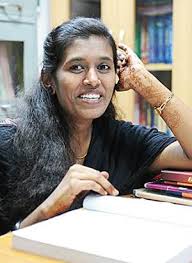Mangalore :
Reading in the media about the projected start of centenary celebrations of Bunts Hostel on May 9, 2014, announced on May 7 by a high profile group of Bunt leaders at a press conference, I had to refresh my memory as a tracker of developments in Tulu Nadu. I had projected Bunts Hostel as a surviving centurion in the media little ahead of the centenary mark in the middle of the last decade – assuming that it would survive a couple of years to justify its surviving centurion tag. It did. But, the centenary celebrations apparently did not take place. Checking on it, a leading light of the Bunt community explained that there were some impediments which are now behind it to launch the aborted celebrations. Better late than never. It is relevant to trace history of the 100-plus years of this organization.

One of the landmarks of Mangalore is Bunts Hostel Circle (now reconstructed and shifted a bit and awaiting inauguration on May 9) which derives its name from the community’s hostel for students, located in a vast complex to the north of the circle. The hostel, under the auspices of Buntara Yane Nadavara Sangha ®, was on the threshold of celebrating its centenary when I tracked it in the middle of the last decade. Elaborate preparations were on with a group of scholars researching the community’s background to publish a comprehensive history of Bunts.
It is interesting to note that the community, which was mainly rural-based and land-owning, had the foresight of looking into the needs of its youth coming to Mangalore town in quest of education—over a century ago. Even in the decades since, the thrust of Bunts had been to establish hostels for students in various taluk and other centres in Tulunadu. The idea was abroad much before the concrete move was made in 1907 and its future, with added dimensions is well poised to justify the consideration of Bunts Hostel as a surviving centurion.

Before we come to the first Bunts Hostel and its several replications, let us briefly consider the background of Bunts. According to the Gazetteer of South Canara (Madras District Manual), edited by John Sturrock, ICS, and first published in 1894, Bunts, as their name implies (Bunt in Tulu is a powerful man, a soldier), were originally a military class and the use of the term Nadava, instead of Bunt, in the northern portions of undivided South Canara (north of Kallianpur River) points, among other indications, to a territorial organisation by “Nads”. But few traces of such organisation now prevail, great changes having been made when the Vijayanagara government introduced, more than six hundred years ago, a system of administration under which the local Jain chiefs, though owing allegiance to an overlord, became more independent in their relations with the people of the region. Under the Bednore kings, and still more under the Mysore rule, the power of the chiefs also swept away, but the old local organisation was not reverted to.
As Sturrock noted 120 years ago, “the Bunts are now the chief land-owning class”. Since the early centuries of the Christian era, Tulunadu seems to have had chieftains who were in constant state of fighting for hegemony. This threw up a class of people known as Bantaru or warriors who, in course of time succeeded in becoming the owners of land which did not fall to the share of the priestly class, Brahmins.
Bunts, notes Sturrock, are a fine stalwart race with a sturdy independence of manner and the comparatively fair complexion common to the West Coast. They had not largely availed themselves of European education, and consequently there were but a few of them in government service; but among these few, some had attained high office and been much respected.
Ten years after Sturrock describing the status of Bunts as above, the community leaders realised the need to help students going to Mangalore for higher education. This gave birth to Buntara Yane Nadavara Sangha in the first decade of twentieth century. The community leaders, mainly landed gentry living in mofussil areas, realised the importance of educating their youth if the community was to progress. There were few higher educational institutions in Mangalore and students coming from distant villages, in the absence of modern transport as now, needed residential accommodation in town. October 23 and November 3 of 1907 are historic dates for the Bunts. On these dates, 37 leaders of the community covering the geographic areas from Kasargod to Basrur, decided to establish student hostels in Mangalore and taluk towns. Even before these two meetings, 16 local meetings had been held in various centres in Tulunadu.
On May 17, 1908, the first general body meeting of the Sangha was held in Ramakrishna Vidyarthi Bhavan in Mangalore, under the presidentship of Attavara Ramayya Punja, Civil & Military Station Judge, Bangalore. The first office bearers included Attavara Devappa Punja (President), Kodialguthu Krishna Salaya, (Vice President), B. Mahabala Hegde (Secretary) and Attavara Balakrishna Shetty (Treasurer). The Sangha was registered under Madras Government on May 10, 1908.
In 1907, the hostel was started in a bungalow at Karangalpady with six students. Later, on March 3, 1908, the Sangha acquired its present land and constructed the first hostel which was inaugurated on May 19, 1909 by the then District Collector – with 52 students. While this hostel served well in succeeding decades, a new hostel, Vittal Shetty Memorial Building, now serves the students of the community. Since then, many hostels, schools, old age homes and multi-purpose halls have been constructed by the Sangha in taluk towns and other centres.
Bantara Yane Nadavara Sangha name was changed to Bunts Alias Nadavara Mathr Sangha in 2002. Federation of Bunts Associations was established in 1987. In 1995, the first World Bunts Convention was held in Mangalore followed by a second Convention in 2002. The forthcoming centenary celebrations are sure to provide fresh impetus to the Sangha’s activities and hopefully help to heal the factors that delayed the celebrations by six years.
source: http://www.daijiworld.com / DaijiWorld.com / Home> Top Stories / by John D. Monteiro / Thursday – May 08th, 2014

